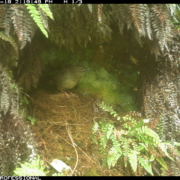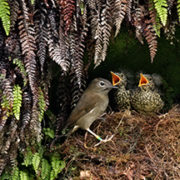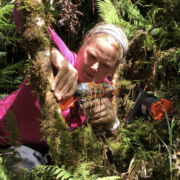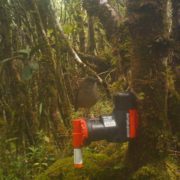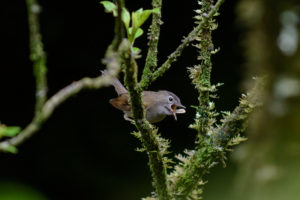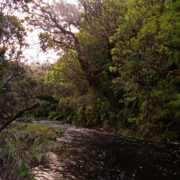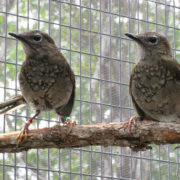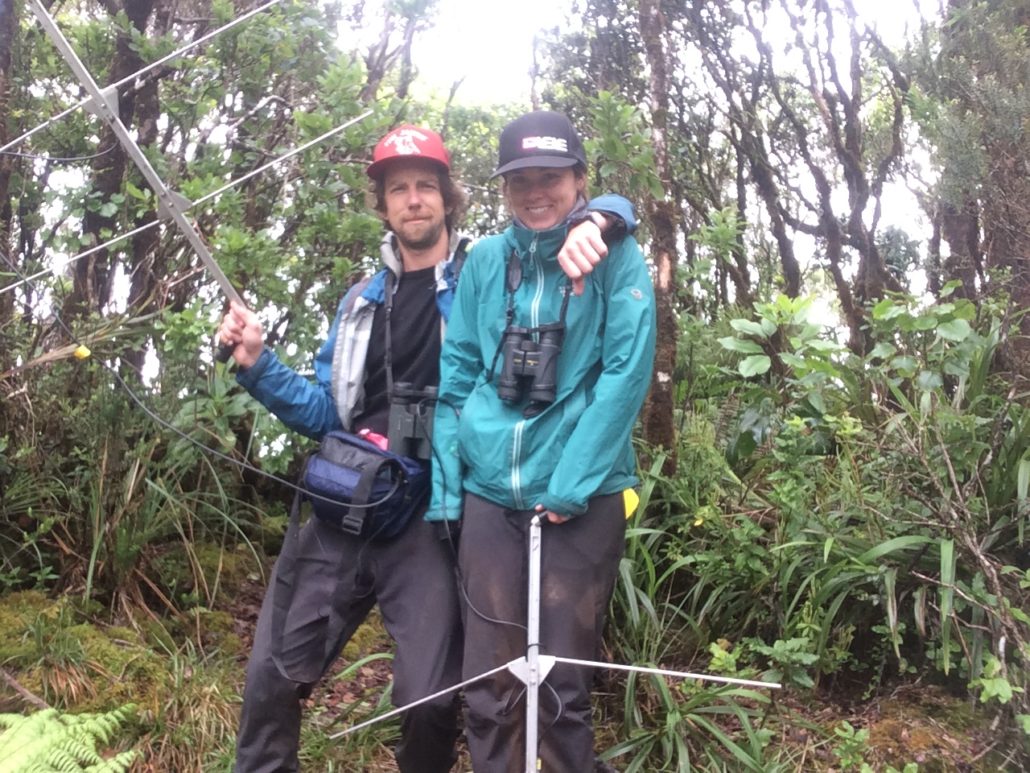 By Doug Marcum
By Doug Marcum
The Alaka’i Plateau, which sits on top of Kaua’i, is one of the wettest places on earth. On the eastern end of the plateau, near the summit of the island, Mt. Wai’ale’ale receives an average of 450 inches of rain per year. The Hawaiian name roughly translates to “overflowing water”, which is a scenario that occurs frequently across this montane rainforest.
The wettest place got wetter in an extreme rain event that occurred during one of my recent trips to our main bird camp back in mid-April. My girlfriend, Kelsey, came out to help as a volunteer, and she and I were busy following a recently radio-tagged Akeke’e the day before the big storm came (if you’re serious about bird conservation and can handle working hard in tough terrain, contact us about volunteer opportunities!). From the shelter of the camp Weatherport we listened to thunder and heavy rain all night as lightning lit up the scene. We sure were thankful for camp that night! According to co-workers who have been around much longer than I, the Alaka’i doesn’t see much in the way of thunderstorms, so I knew that this was a rare event.
At 4:30 AM I decided to run outside to look at the stream near camp and found it to be raging in a way that I am certain that no one else has ever seen!! Illuminating the darkness of the night and storm with my headlamp, I could see the water rushing by at frightening speeds, carrying anything away in its path. On my very first trip to the Alaka’i, we had had heavy rains and the seasoned members of the crew said that they have never seen the stream so high. Well, on the early morning of April 15th, the stream was much higher. It was to the point where if it had risen just a few more inches, our deck would have been sitting in the main channel of running water! Although it looked frightening, I knew that we were safe where we were in the headwaters of this stream, and higher ground isn’t hard to find from camp. I was able to go back to sleep that night and by 9:30 AM the stream had settled down to the point where Kelsey and I crossed it to do more work that day.
Many of the streams in Kaua’i can be very “flashy”, meaning that they rise fast during rain events, but also can lower just as quickly. Down in the lowlands, however, the water that collected all over the mountain had combined and found its way through the main drainages to the ocean and caused historic damage, especially to the famous north shore of the island. Twenty-seven inches of rain over 24 hours were measured near Hanalei during this record-breaking storm, and the island is still recovering. Severe weather events and disasters can be catastrophic for critically-endangered species since population levels are so low, but thankfully the individual birds that we track endured the storm and bird camp survives. Some Kaua’i forest bird species were never seen again after hurricane Iniki leveled much of the forest on the plateau back in 1992. These kind of disasters are one of the many threats we address in efforts to protect these birds. For now, species like the ‘Akikiki, ‘Akeke’e, and Puaiohi are still hanging on in Kauai’s high-plateau wilderness, and I hope that it continues this way.
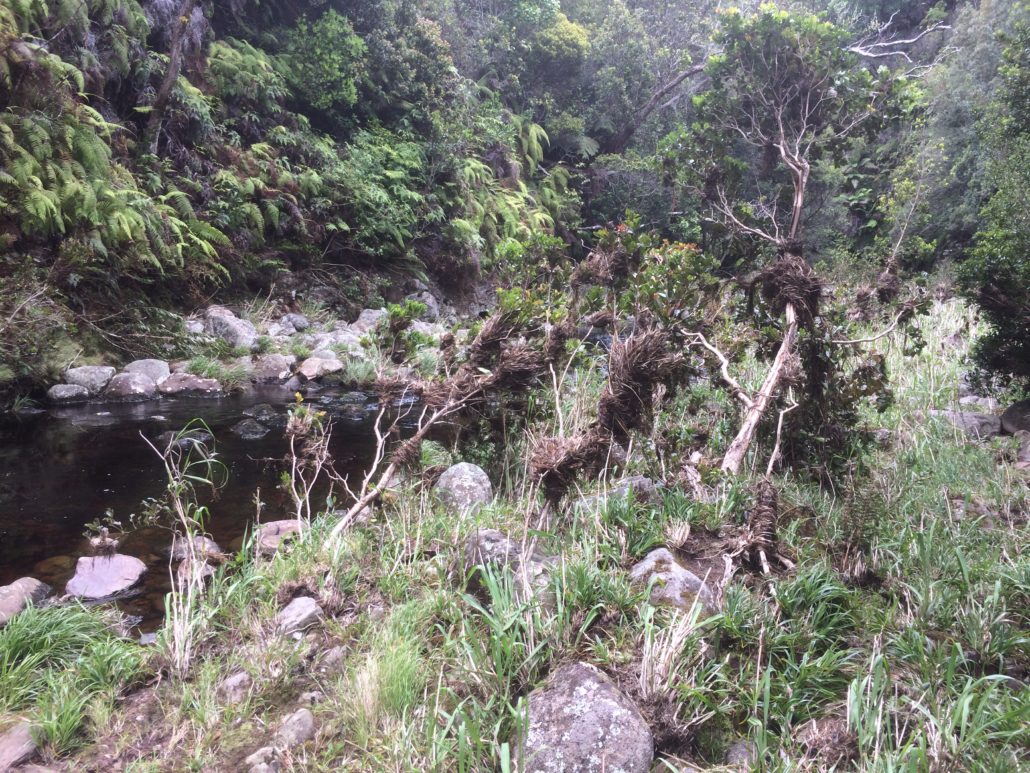
SaveSave
SaveSaveSaveSave
SaveSave

